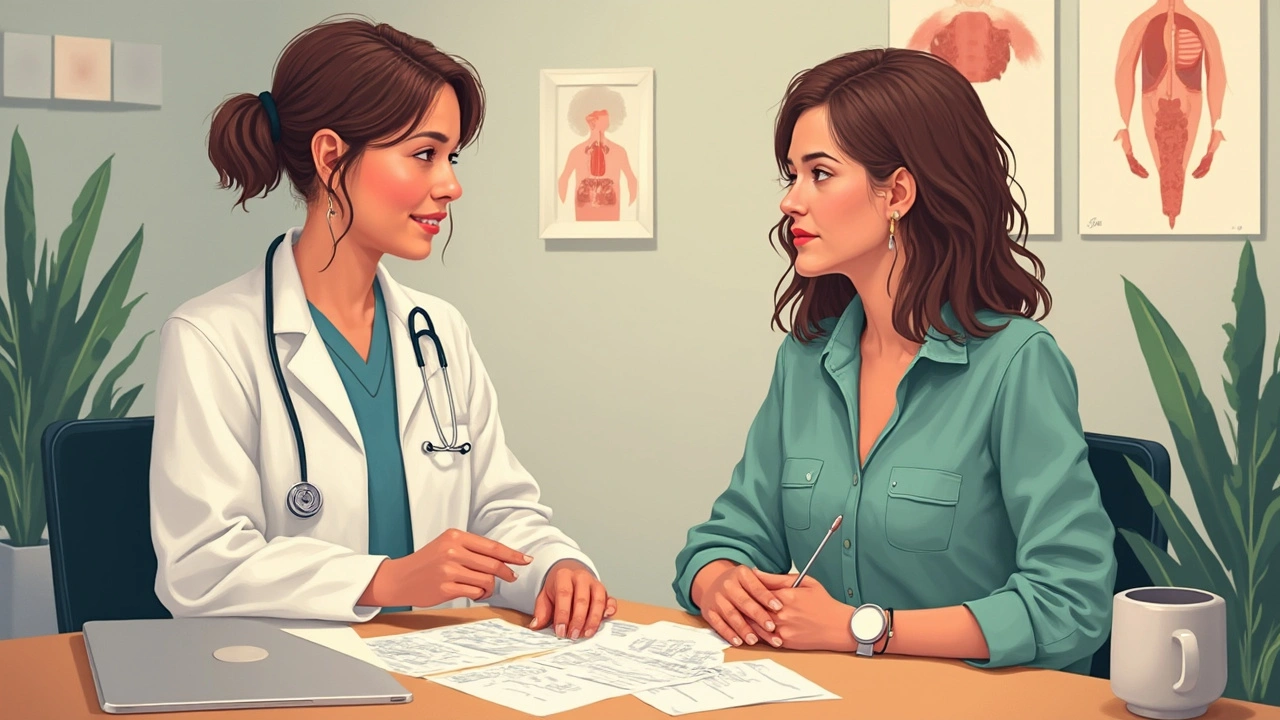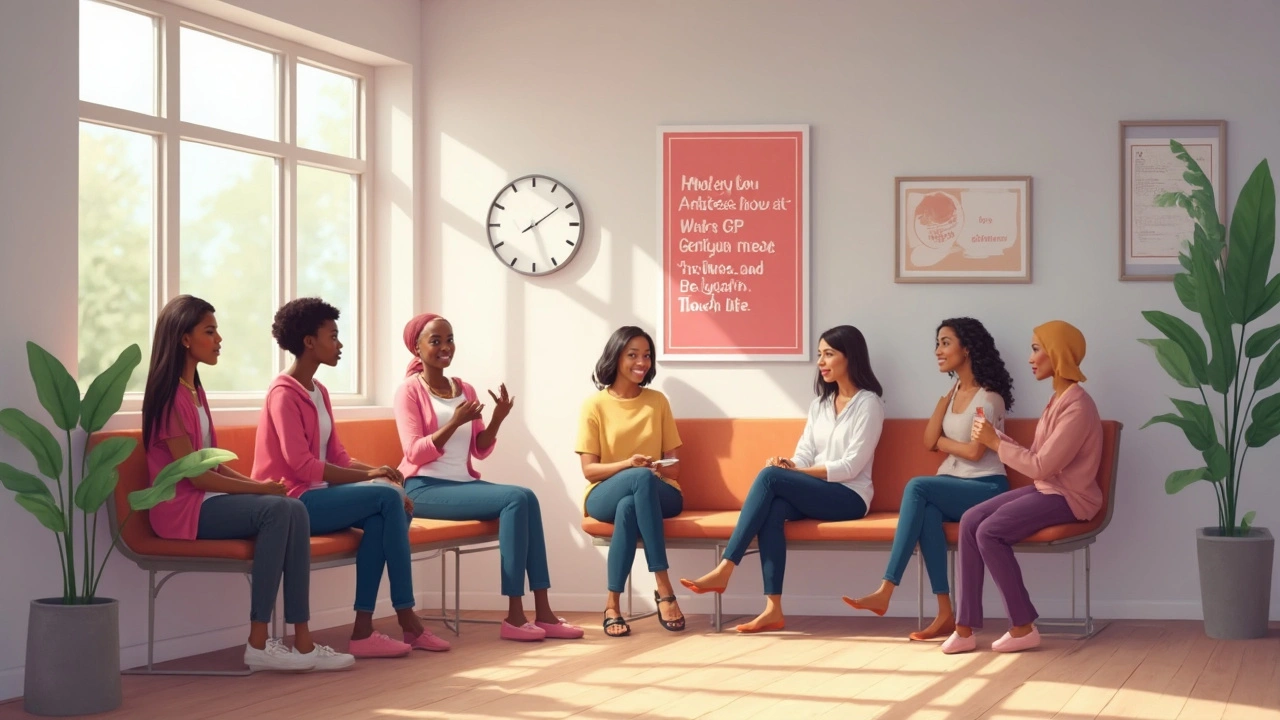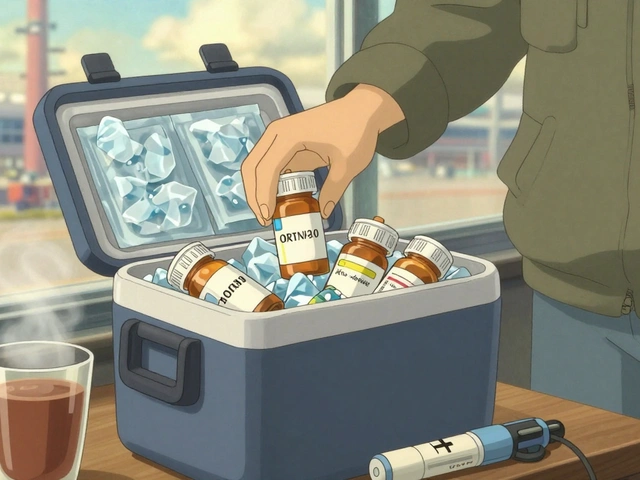Anytime you hear the word 'STD,' your mind probably jumps to the big names—chlamydia, gonorrhea, herpes. But trichomoniasis, often just called 'trich,' silently infects millions of people every year and most have no idea it’s even there. Australia sees tens of thousands of new trich cases each year, and the global numbers are huge—over 170 million cases yearly, according to the World Health Organization. Trich is also the most common curable STD worldwide. You’d think we’d be talking about it a lot more, right? But awkwardness, embarrassment, and a sheer lack of awareness keep it in the shadows. The real risk isn’t just the infection—it’s what can happen if you miss the signs or ignore the problem.
Understanding Trichomoniasis: What You’re Dealing With
So, what is trichomoniasis, exactly? It’s an infection caused by a tiny single-celled parasite called Trichomonas vaginalis. Unlike bacteria or a virus, this bug is in the “protozoan” family—a little creature that moves with wiggle-like tails called flagella. The infection crops up mostly in the vagina, but men can get it too, typically affecting the urethra. And get this: About 70% of those infected won’t notice any symptoms at all. That means you could be passing it to your partner without knowing, or you could pick it up from someone who looks perfectly healthy.
Not all cases are stealthy, though. If symptoms do show up, women are more likely to notice them, and they can kick in anywhere from five days to a month after exposure. Here’s the textbook list—though no one ever said life sticks to textbooks:
- A frothy, greenish-yellow vaginal discharge with a fishy or musty odor
- Itching, burning, or redness in and around the vagina
- Pain while urinating or during sex
- Discomfort or swelling near the vaginal area
- Spotting or bleeding between periods (less common, but possible)
Men almost never get symptoms, but when they do, it can show up as a mild irritation in the penis, slight discharge, or burning after peeing or ejaculation. The kicker here is how easy it is for trich to go unnoticed—sometimes for months or years. You might see symptoms fade and assume it’s gone, but the infection just goes silent again. That’s why it’s important to get checked regularly if you’re sexually active with new or multiple partners, even if you feel fine.
Besides being uncomfortable and embarrassing, untreated trichomoniasis can play serious havoc with your health. Women run a higher risk for pelvic inflammatory disease, complications during pregnancy (like premature labor or low birth weight), and even a higher chance of catching or passing HIV if exposed. For men, trich can make them more likely to contract or pass on other STDs and might affect fertility. Not to scare you, but these are reasons to take it seriously, not to panic.
Who’s most at risk? It hits hardest in people with more than one sexual partner, those who don’t use condoms consistently, and places where healthcare access is trickier. But regular people—your neighbor, your mate at work—can catch it too. Using condoms (or dental dams) for all types of sex, regular testing, and having honest chats with your partner do a world of good at keeping things in check.
If you notice any unusual vaginal discharge, irritation, or something just feels 'off,' don’t ignore it or chalk it up to a yeast infection. Trichomoniasis is often mistaken for other vaginal infections because the symptoms overlap. You could buy fungal cream after fungal cream and never get relief. It’s a sneaky bugger and knows how to blend in with more common irritations women get. So, if things linger or the over-the-counter stuff doesn’t work, it’s time to see a doctor.
Spotting the Symptoms: When You Should Worry
You might wonder, if so many people don’t get symptoms, is it really a big deal? Here’s where it gets tricky: the symptoms, when they do show up, often overlap with garden-variety vaginal infections—like thrush or bacterial vaginosis. That’s why so many women self-diagnose and self-treat with yeast creams, only to find nothing changes. Trich really likes to play pretend.
Let’s break down the symptoms a bit more, since most people don’t talk about them openly. The discharge from trich is not just a bit extra or vaguely different—it’s usually abundant, foamy, and has a tint ranging from yellow-green to gray. The smell can be enough to make you want to skip the gym locker room or yoga class, and sometimes partners notice it even before the person who’s infected does. Itching and irritation can get so bad that some women can’t get comfortable in their clothes. Sex may become painful, and peeing can sting, sometimes quite a lot. It’s not unusual for these symptoms to flare up before your period and then ease for a while—another reason the infection can stay under the radar.
If left untreated, these symptoms don’t just linger—they can come back worse and cause longer-term problems. Repeated or long-term trich infections are linked to fertility issues, pelvic pain, and, in rare cases, can make other infections easier to catch. There’s also new evidence from Australian clinics that trich in pregnant women raises the risk for premature births and low-birth-weight babies. That’s a big deal—it may be a hidden reason for pregnancy problems that nobody tests for on routine screens.
For men, symptoms are way less dramatic but no less important. They can get a slight discharge, a burning feeling after urinating, or even mild irritation along the shaft. Most brush these off as nothing or as a one-off. Some shrug it off because the symptoms are gone in a couple of days. But don’t be too quick to ignore it. Trich can hide in the body and pop up weeks or months down the line, or get passed along to partners without a hint of a problem.
How long do symptoms take to show? Usually between five days and four weeks, but sometimes people can have the infection for months before anything pops up. Stress, illness, or another infection can make things flare. If your partner has symptoms or has been treated for trich, get checked—even if you think you’re fine. It’s just not worth the risk.
So, if you’re seeing unusual discharge or any kind of persistent itch or pain 'down there,' book an STI check—not just for trich, but for the other usual suspects. At clinics in Brisbane and other Australian cities, trich is included in STI checks for women with symptoms, those who have new partners, or when another infection test comes up negative. You don’t need to feel embarrassed or scared—doctors see this all the time and want to get you sorted quickly and privately.

How Doctors Diagnose Trichomoniasis
Here’s the part no one likes to think about, but it’s really not as scary as it sounds. Getting checked for trich is fast, pretty painless, and much more accurate than guessing at home. If you’re at the doctor, they’ll take a simple vaginal swab (or urethral swab for men), and sometimes a urine sample. The swab only takes a couple of seconds—yes, it can feel a little awkward, but it’s miles better than living with the symptoms or passing it on. Some clinics even let you take your own swab behind a curtain—no big deal.
Most doctors will look at the swab under a microscope right there in the clinic. Trichomonas vaginalis moves in a very distinctive way—kind of like vibrating or twitchy blobs—so a trained nurse or doctor can usually spot them straight away. That said, microscopic testing on the spot isn’t perfect. The sensitivity’s only about 50-70%, so it misses some cases, especially if you’ve had symptoms a while.
The gold standard these days is NAAT (nucleic acid amplification testing)—the same kind of super-sensitive test used for chlamydia and gonorrhea. These lab tests can pick up even tiny amounts of the parasite's DNA in your sample, and they’re over 95% accurate. The downside? You might have to wait a couple of days for your results, but you avoid all the guesswork.
In Australia, public sexual health clinics (like Family Planning Queensland) and many GPs offer trich testing, usually bulk-billed if you have a Medicare card. It’s confidential, no judgments, and they’ve heard every question imaginable. If you’re nervous, ask for someone who’s handled sexual health before—they’ll make things pretty chill.
Here’s one thing you may not know: you can test positive for trich while still having no symptoms. In fact, routine checks for pregnant women and IVF patients sometimes uncover trich by accident. It’s always treated, even if the infection isn’t causing symptoms, because of the possible knock-on effects for your health and partner’s health.
If you think you might have trich, or your partner tells you they’ve tested positive, don’t feel embarrassed or mad—this parasite is tough and can hide for ages. What matters is tackling it quickly. If your doctor only screens for the more famous STDs (like chlamydia and gonorrhea), ask specifically for a trichomoniasis test, especially if your symptoms sound similar.
Tip: Don’t douche, use antibiotics, or apply creams before testing, or it can mess with your results. Bring a symptom diary if you have persistent problems. The more honest you are, the easier and faster it is for your doctor to crack the case.
Treatment and What to Expect After Diagnosis
Trichomoniasis might sound intimidating, but here’s the relief: it’s surprisingly easy to treat in almost every case. The first-line treatment is metronidazole or tinidazole—antibiotics that are taken either in a single high dose or spread over several days. Your doctor will usually go for the single-dose approach unless you have certain health conditions or the infection comes back. In Australia, these medications are prescribed, not over the counter—so you need to see a doctor for them.
Here’s what you can expect. After diagnosis, you’ll get the medication and instructions, and you’ll need to avoid sex for about seven days. Yes, a week. This gives your body time to clear the infection completely, and it prevents passing it to your partner. Both you and your partner(s) must be treated at the same time—no exceptions—even if your partner feels 100% fine. Otherwise, you’ll keep passing the infection back and forth in what’s called 'ping-pong' transmission.
Side effects? Most people handle metronidazole or tinidazole just fine. Some feel a bit queasy, notice a metallic taste in their mouth, or get mild tummy upset, especially if they drink alcohol with the pills. And here’s the kicker: you can’t drink any alcohol while you’re on these antibiotics and for at least 24-72 hours after finishing. Drinking even a glass of wine can trigger nasty headaches, vomiting, and flushing. Seriously, it’s not worth it—skip the drinks for a few days.
Women’s symptoms clear up in about a week, often much faster. If you still have symptoms after taking the medicine, don’t just hope for the best—go back to your doctor. Sometimes the infection doesn’t clear, possibly because of not treating all partners or not following the full treatment. Rarely, trich can be resistant to standard antibiotics, and your doctor can prescribe a different regimen if that’s the case.
There’s no need to re-test unless your symptoms come back, unless you’re pregnant (where your midwife might want to double-check), or if your partner wasn’t treated at the same time. In some Aussie clinics, a routine follow-up is offered to anyone who’s had repeat infections—especially if they’re at higher risk or pregnant. Keep an eye out for lingering irritations, and don’t hesitate to go back if things don’t feel right.
It’s a good idea to do a full sexual health check again in a few months, especially if you change partners or have ongoing risk. Lots of organizations—like Family Planning, True, or your local GP—offer quick and easy testing to put your mind at ease. Don't forget: clean sex toys between uses, avoid sharing, and if possible, use fresh protection even for toys. Laundry advice? Wash underwear and towels in hot water if you or a partner are being treated, just to be extra safe.
No vaccine exists for trichomoniasis. Your best shield is consistent condom use, open chats with partners about testing, and not hesitating when something feels off. Regular STI screens are not just for people with lots of partners—half of people who get trich have no inkling where it came from. There’s no shame in this at all. The real danger is ignoring it or hesitating to get help.
One last thing to remember—kids can’t get trich through toilet seats, pools, sharing towels, or casual contact. This is an infection passed almost entirely by sexual contact. The actual parasite can’t survive long outside the body, so don’t stress about catching it from a hotel bathroom or gym bench. Stick to smart, safe sex practices, regular checkups if you’re at risk, and speak up if something’s not right. There’s real power in knowledge and taking charge of your own health.





17 Comments
Sebastian Brice-18 May 2025
Wow, this is actually one of the most non-judgmental, clear-headed breakdowns of trich I’ve ever read. Like, seriously - why isn’t this on every high school health site? I’ve had friends suffer for months thinking it was yeast, and no one ever mentioned trich. We’re all just so weirdly embarrassed to talk about vaginas like they’re normal body parts. Maybe if we stopped treating STDs like moral failures, fewer people would suffer in silence.
Jim Aondongu-19 May 2025
People act like trich is some big secret but its just another infection like any other if you dont have sex with dirty people you wont get it
Michael Schaller-21 May 2025
I appreciate how this post normalizes testing without shaming. I used to avoid the clinic because I felt like I was admitting failure - like if I got trich, I must’ve done something wrong. But the truth? I got it from a partner who got it from someone else who never got tested. It’s a loop. No one’s dirty. No one’s bad. It’s just biology. And biology doesn’t care about your Instagram bio or your relationship status. I got treated, told my partner, and we both moved on. No drama. No guilt. Just care.
Kyle Tampier-22 May 2025
This is a government psyop!!! They want you to get tested so they can track your sexual habits!! And metronidazole? It’s just a cover for fluoride poisoning!! I’ve seen the documents!!
Tom Caruana-23 May 2025
OMG I JUST REALIZED MY EX HAD THIS AND NEVER TOLD ME 😭😭😭 I THOUGHT IT WAS JUST MY PERIOD BUT NOW I’M SCARED I’M INFECTED AGAIN AND MY CAT MIGHT HAVE IT TOO 🐱💔 I NEED TO GO TO THE CLINIC RIGHT NOW AND ALSO TELL MY BOSS BECAUSE WHAT IF I SPREAD IT THROUGH THE OFFICE KETTLE??
Muzzafar Magray-24 May 2025
You westerners make everything about sex and shame. In India we know that such diseases come from bad karma or lack of discipline. No need to test or take pills. Just pray and avoid temptation.
Renee Williamson-26 May 2025
Okay but have you heard about the NEW TRICH COVER-UP?? Like, I swear, I read on a blog that the CDC knows that trich is actually caused by 5G towers and they’re hiding it because Big Pharma wants you to buy antibiotics instead of buying their ‘frequency healing’ devices?? I’m not saying I believe it… but… have you seen the way the swabs are packaged??
Manish Mehta-26 May 2025
Good info. Simple. No drama. Just facts. I read this and thought - yeah, this makes sense.
Okechukwu Uchechukwu-27 May 2025
Trichomoniasis is just nature’s way of saying we’ve lost touch with our primal instincts. We live in sterile cities, wear synthetic underwear, and fear our own biology. The parasite? It’s not the enemy. It’s the mirror.
Sarah Cline-27 May 2025
Just got tested yesterday after reading this - and guess what? Negative! But I’m so glad I went. Felt way less awkward than I thought. My nurse even cracked a joke about how ‘we’ve all been there.’ If you’re even a little unsure - go. You’ll feel like a million bucks afterward. Seriously. Your future self will high-five you.
Sierra Thompson-29 May 2025
The real tragedy isn't the infection - it's the societal silence around bodily autonomy. We treat sexual health like a taboo, yet we'll happily discuss the nutritional content of kale smoothies for 45 minutes. We've normalized the commodification of wellness while pathologizing the natural processes of human intimacy. The parasite is a symptom - not the cause.
Khaled El-Sawaf-30 May 2025
It is noteworthy that the prevalence of trichomoniasis correlates strongly with the decline in institutionalized sexual ethics and the normalization of non-monogamous relationships in post-industrial societies. The medicalization of what was once a moral concern represents a profound epistemological shift in public health discourse - one that prioritizes symptom management over behavioral accountability.
Nawal Albakri- 1 June 2025
THIS IS WHY I HATE DOCTORS THEY ALWAYS GIVE YOU THE WRONG MEDS AND THEN YOU GET WORSE AND THEN THEY SAY YOU DIDNT TAKE IT RIGHT BUT I DID I DID I DID AND NOW I’M SCARED I’M INFECTED WITH SOMETHING ELSE AND MY MOM KNOWS I’M SEXUAL AND SHE’S GOING TO KILL ME 😭😭😭 I JUST WANT TO BE NORMAL
Megan Oftedal- 2 June 2025
I’m just curious - how many of these cases are actually from shared towels or public toilets? I mean, I’ve sat on those gym benches… and I’ve used hotel bathrooms… and I’ve shared a towel with my sister… I just need to know if I’m being paranoid or if I should be sterilizing my entire life.
Musa Aminu- 2 June 2025
Look, Nigeria has better things to worry about than some tiny bug. We got real problems - load-shedding, corruption, bad roads. You think your vagina is the center of the universe? Go fix your government first. Then come back and complain about trich.
robert maisha- 4 June 2025
Perhaps the true question is not whether trichomoniasis is curable but whether our social structures are capable of accommodating the vulnerability required to confront it. The silence surrounding this infection reflects a deeper pathology - the refusal to acknowledge the body as a site of shared, imperfect, and ultimately sacred experience.
Alexander Ståhlberg- 6 June 2025
I’ve been living with this for over a year. I thought it was just a yeast infection. I bought three different creams. I avoided sex. I cried in the shower. I told my partner I had a UTI. I didn’t want to be judged. I didn’t want to be ‘that girl.’ Then I found this post. I went to the clinic. Got treated. Told my partner. We both cried. We both got tested. We both got better. And you know what? I’m not ashamed anymore. I’m just… human. And that’s okay. If you’re reading this and you’re scared - go get tested. You’re not alone. I promise.